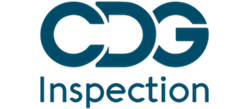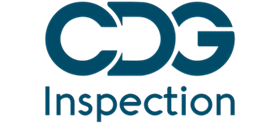Introduction:
Regulatory inspections play a crucial role in ensuring the safety, quality, and efficacy of pharmaceutical products. One significant aspect of these inspections is the assessment of the qualification and training of personnel involved in various stages of drug development, manufacturing, and distribution. In the context of the European Union Good Manufacturing Practice (EU GMP) audits, which aim to ensure that medicinal products are consistently produced and controlled according to quality standards, evaluating personnel qualification and training is of paramount importance. This article delves into the significance of regulatory inspections in assessing the qualification and training of personnel during EU GMP audits, exploring their purpose, methodologies, benefits, challenges, and evolving trends.
The Purpose of Personnel Qualification and Training Assessment in EU GMP Audits
Personnel involved in pharmaceutical manufacturing, quality control, and related functions play a critical role in ensuring product quality and patient safety. The purpose of assessing their qualification and training during EU GMP audits is to ascertain whether personnel possess the necessary knowledge, skills, and competencies to perform their roles effectively and in compliance with established regulations and standards. These assessments aim to verify that personnel are adequately trained to understand and execute their responsibilities, minimizing the risk of errors, deviations, and non-compliance.
Methodologies for Assessing Personnel Qualification and Training
- Document Review: Regulatory inspectors often begin by reviewing personnel training records, qualification documentation, and standard operating procedures (SOPs) related to training programs. This helps them understand the training framework, curricula, and methods in place.
- Interviews: Inspectors conduct interviews with personnel at various levels to gauge their understanding of GMP principles, their roles, and the procedures they follow. These interviews provide insights into the effectiveness of training programs.
- Observation: Inspectors may observe personnel in action, such as during manufacturing processes or quality control tests, to assess their adherence to proper procedures and protocols.
- Training Program Evaluation: The content and structure of training programs are evaluated to ensure that they cover relevant topics, are up-to-date, and align with regulatory requirements.
Benefits of Regulatory Inspections for Personnel Qualification and Training
- Quality Assurance: Thorough assessment of personnel competence helps ensure that products are manufactured, tested, and distributed in compliance with GMP standards, reducing the likelihood of quality issues and recalls.
- Patient Safety: Adequately trained personnel contribute to the production of safe and effective medicines, minimizing the risk of adverse events caused by manufacturing or testing errors.
- Compliance: Regulatory inspections verify the company’s adherence to GMP regulations regarding personnel qualification and training, leading to regulatory compliance and avoiding penalties.
- Continuous Improvement: Inspection findings can provide feedback that helps companies enhance their training programs, address gaps, and continuously improve their operations.
Challenges in Assessing Personnel Qualification and Training
- Diverse Workforce: Companies often employ personnel with varying educational backgrounds and experience levels, making it challenging to develop uniform training programs.
- Training Program Complexity: In the rapidly evolving pharmaceutical industry, keeping training programs up-to-date with the latest regulations and technologies can be complex and time-consuming.
- Language Barriers: In multinational companies, language differences can hinder effective communication and training, potentially affecting personnel understanding.
- Resource Constraints: Developing and implementing comprehensive training programs require significant resources, including time, money, and personnel.
- Remote Work and Digitalization: The shift to remote work and increased digitalization of processes due to events like the COVID-19 pandemic can impact traditional training methodologies.
Evolving Trends in Assessing Personnel Qualification and Training
- Technology Integration: Companies are leveraging e-learning platforms, virtual reality, and augmented reality to provide engaging and effective training experiences.
- Data Analytics: Utilizing data analytics, companies can identify training trends, assess the effectiveness of programs, and target specific areas for improvement.
- Risk-Based Approaches: Companies are adopting risk-based strategies to prioritize training for critical roles and processes, ensuring that high-risk areas receive appropriate attention.
- Regulatory Harmonization: Efforts toward harmonizing regulations internationally facilitate consistency in personnel qualification and training expectations across different markets.
Conclusion:
Regulatory inspections serve as a cornerstone of ensuring personnel qualification and training in the pharmaceutical industry, particularly within the framework of EU GMP audits. These inspections validate that personnel possess the knowledge and skills necessary to carry out their responsibilities in compliance with GMP standards. Through document reviews, interviews, observations, and program evaluations, inspectors assess the effectiveness of training programs and their alignment with regulatory requirements. The benefits of such inspections are far-reaching, including enhanced product quality, patient safety, compliance, and continuous improvement. While challenges such as diverse workforces, program complexity, and resource constraints persist, evolving trends like technology integration, data analytics, and risk-based approaches are shaping the future of personnel qualification and training assessments. As the pharmaceutical landscape continues to evolve, regulatory inspections will remain a vital tool in ensuring that personnel are well-equipped to meet the demands of manufacturing safe and effective medicinal products.





